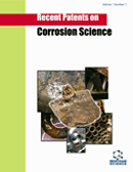Abstract
This paper aims to study the influence of secondary air swirling flow on the non-premixed turbulent combustion fed with fuel oil n°2 injected within a combustor of a drying furnace. First, our attention was focused on the effects that could have this configuration on the phenomenon of walls corrosion caused by water vapor (H2O) and oxygen (O2). Preliminary results showed the possibility to reduce both temperature and water vapor near walls and at the same time to control the humidity which accompanies pollutants in the environment.
In addition, the search for maximum stability and combustion efficiency reached at swirl intensity of 0.6 and had the disadvantage of exposing the walls of the combustion chamber at higher risk of corrosion due to oxygen. Concerning environmental pollution, our study was limited to two species: CO2 and NO. Despite decrease of CO2 and increase of NOx induced by swirl systems at the exit, results confirmed that pollution from NOx was less important than that caused by CO2. Moreover, our proposed swirl configuration tended to slow the rapid expansion of dispersed pollutant CO2 into the atmosphere. This offered a unique opportunity to reduce CO2 emissions from combustion without requiring methods like CO2 separation, storage, transport and disposal which are very expensive and technically difficult. Final observation was detection of minimum values of NO mass fraction with swirl intensity of 0.6. Therefore, the stability of our combustion helped us to reduce the risk of pollution by NOx. Here, we also discussed some related patents.Keywords: Walls corrosion, swirl number, non-premix turbulent combustion, CO2 emission, NO pollution
 1
1







